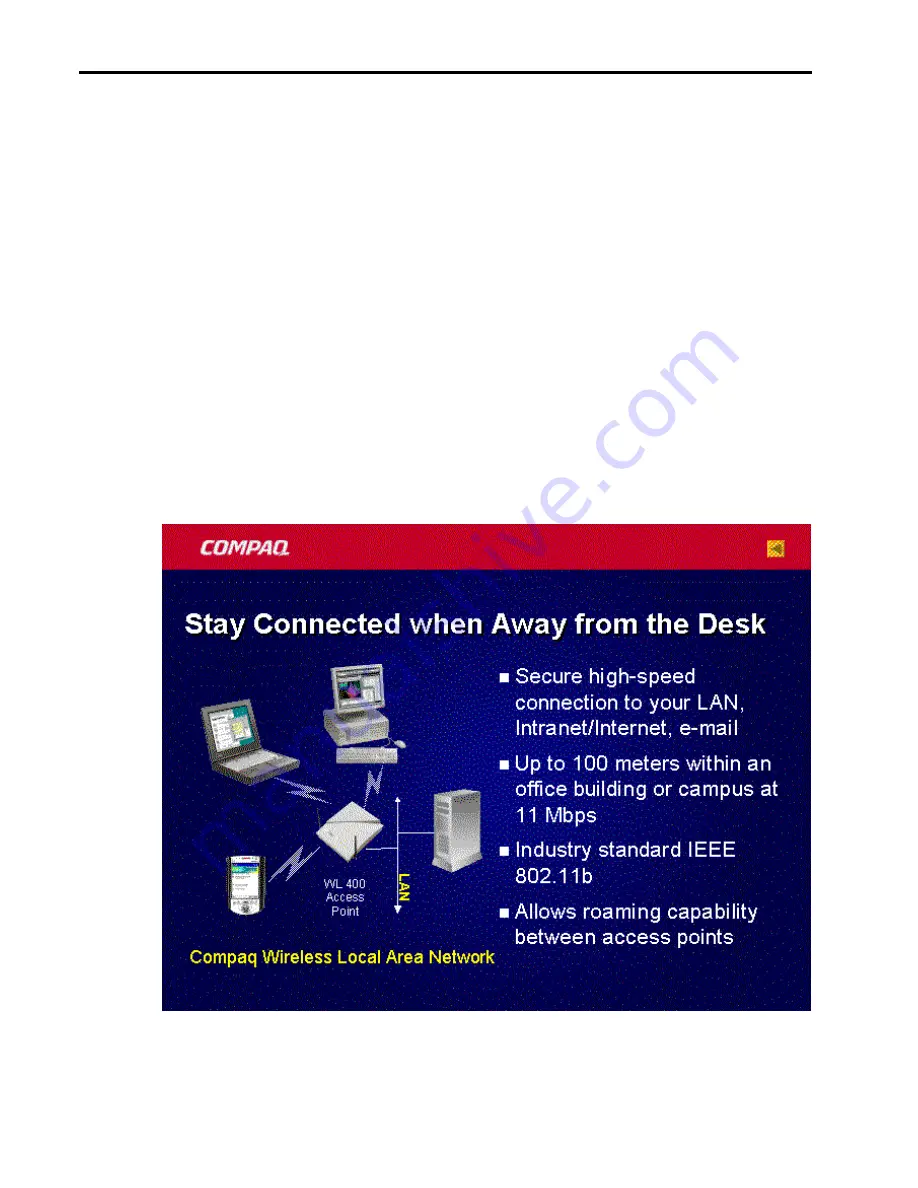
Wireless Security White Paper
10
•
Individual users can connect between various personal devices wherever they are, such as
from a cell phone to a handheld to a desktop computer without cables to synchronize data or
gain access to a wireless connection. Wireless personal area networks (WPANs) facilitate
such connections between devices.
•
External users increasingly want corporate connectivity anywhere at any time. For example,
they can send and receive e-mail, access corporate data, the Internet and intranets, while
sitting in airport lounges, traveling in a cab or sitting in front of a customer. Wireless local
area networks (WLANs) and wireless wide area networks (WWANs) facilitate this usage.
A brief description of these connectivity technologies follows and detailed papers that exist on
each technology are referenced below. The following three subsections comment briefly on the
three types of wireless networks and provide an illustration of each type.
Wireless Local-area Networks
A wireless local-area network (WLAN) is a type of LAN that uses high-frequency radio waves
rather than wires to transmit data among its nodes. It is a flexible data communication system
implemented as an extension or alternative to a wired LAN within a building or campus. Users of
a WLAN can enjoy connectivity to the network without having to plug cables into Ethernet jacks
in every office and conference room.
Figure 2 illustrates a WLAN.
Figure 2: Wireless Local-area Network











































